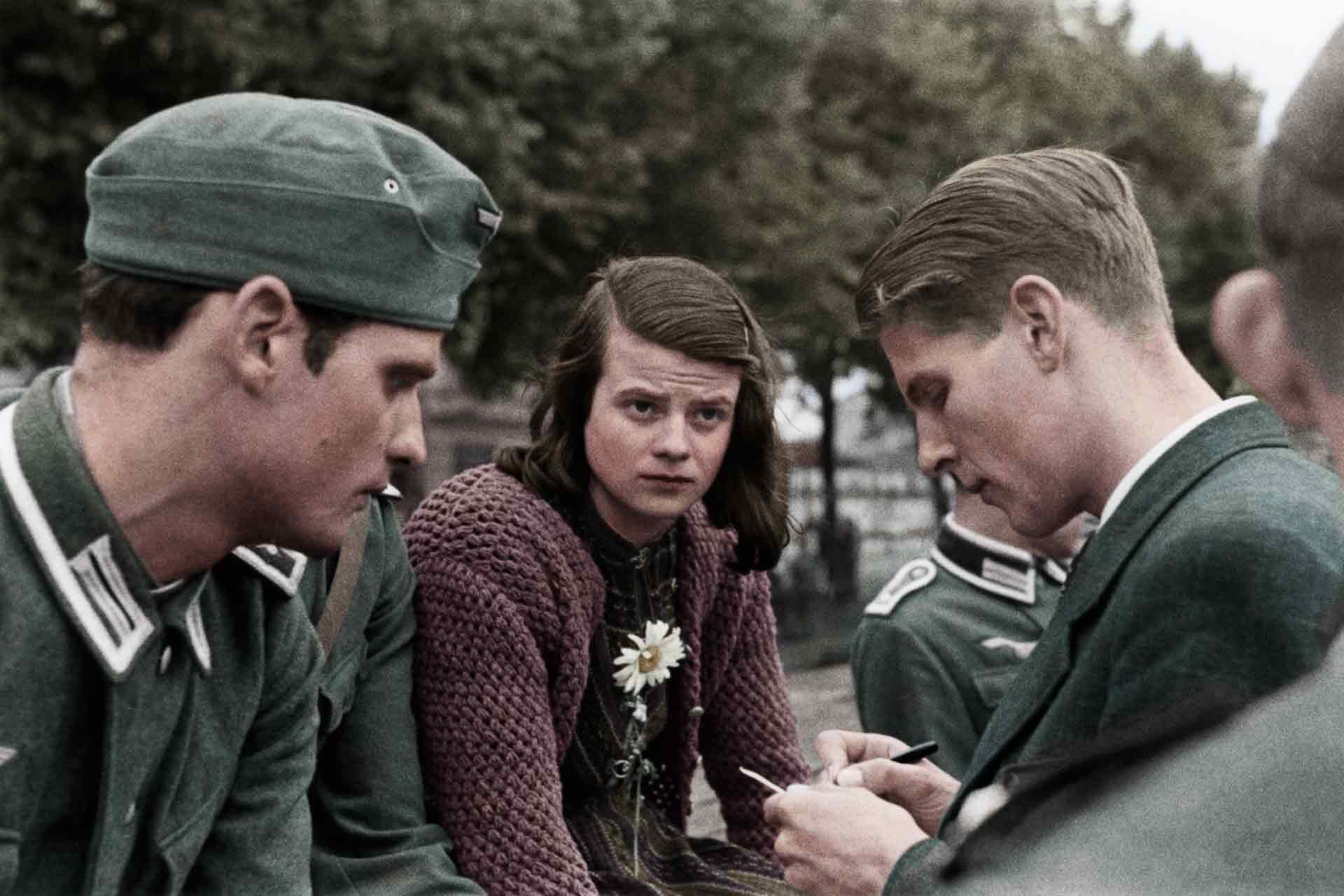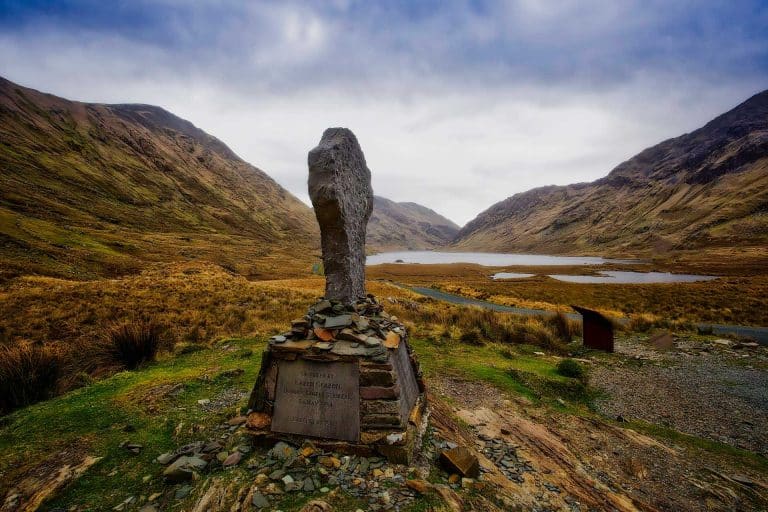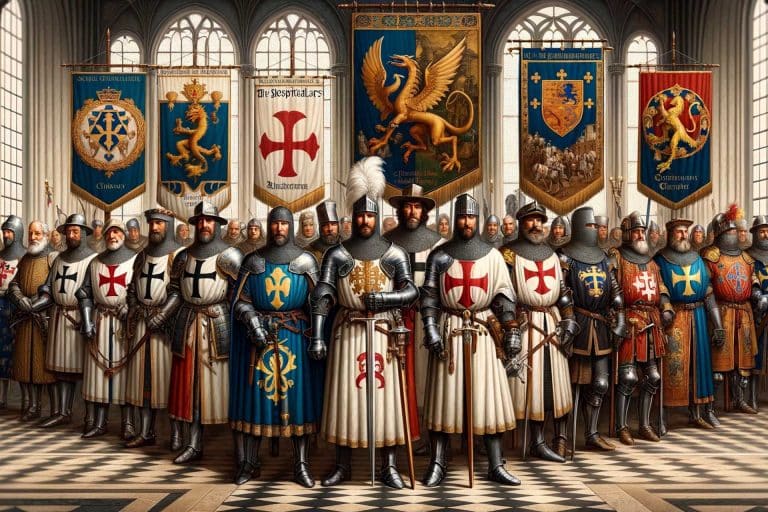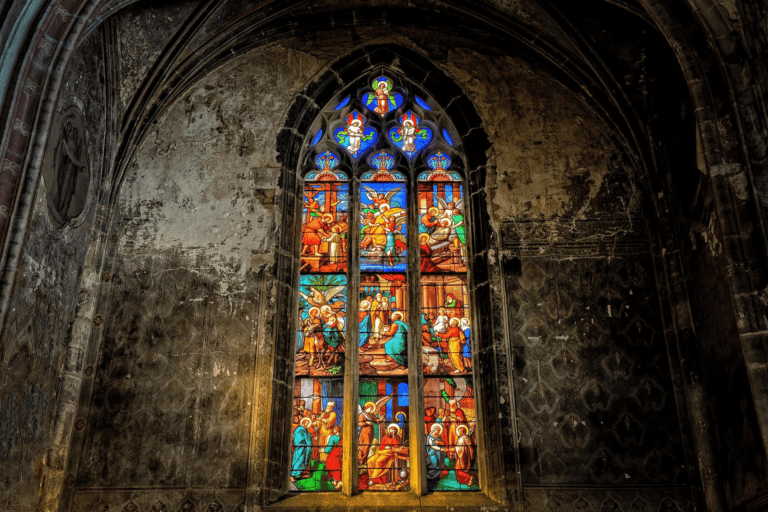Who Was Sophie Scholl? The Brave Student Executed for Defying Hitler
Sophie Scholl is one of the most potent symbols of resistance against the Nazi regime. A young woman who spoke truth to power at significant personal risk. A university student in Munich who dared to call out Hitler’s lies and distribute anti-Nazi leaflets with the White Rose movement. Arrested by the Gestapo in 1943, along with her brother Hans and other activists, Sophie refused to betray her beliefs under intense interrogation and a sham trial.
Sophie Scholl’s story is just as relevant today as it was during World War II. A reminder that individual acts of resistance can make a difference, even in the face of overwhelming tyranny. That the fight for truth and justice is always worth the risk, no matter how hopeless the cause may seem. In an age where oppressive forces continue to threaten our freedoms, we must remember Sophie’s courage and stand up for what we believe in. The White Rose movement may have been slight, but it showed that even the smallest voices could speak truth to power. Let’s honor Sophie Scholl by continuing the fight for freedom, no matter the cost.

Early Life and Education
Sophie Scholl was born on May 9th, 1921, in Forchtenberg, a small German town. Her father, Robert Scholl, was a former mayor of the city and an early critic of Adolf Hitler and his policies. Her mother, Magdalena, was a Lutheran who provided Sophie and her siblings with a strong religious foundation, as well as a sense of compassion and a desire to help the less fortunate. Sophie had two older brothers, one of whom would be a strong influence on her and her own activism later. From an early age, Sophie was encouraged to think for herself. Her childhood and early school years were happy ones, despite the growing political climate in Germany at the time.
Sophie went through a phase of enjoying being in the Hitler Youth as a teenager, which was pretty common at the time. The Nazi movement was well-integrated into every facet of German life, and it was extremely popular among children and young adults. The Hitler Youth, in particular, was viewed as a fun and exciting way to demonstrate one’s patriotism and participate in the movement. Sophie was a good student and an active participant in the Hitler Youth; she seemed genuinely to enjoy being part of the group.
However, as she became older and was able to see more of the state-run programs, she became disenchanted with the movement’s dogmatic rule and lack of free thought. Her father’s words about the Nazis, which she had once thought were extremely pessimistic, began to find truth in her eyes.

Sophie was becoming deeply troubled by what she saw as the Nazi government’s constant violation of the rights of Jewish people in Germany, as well as other minority groups. Her oldest brother, Hans, had been an exceptionally dedicated member of the Hitler Youth when he was younger. Still, he also began to doubt the Nazi regime, which led Sophie’s own skepticism to grow.
By the time she finished high school, Sophie had shed any respect or positive feelings for the Nazi Party, and she no longer saw the benefits that it constantly promised. Instead, she became deeply involved in academic and cultural studies, spending her free time reading as much as possible. She was drawn to philosophy and theology in her late teenage years and was very interested in ideas that challenged the Nazi dogma.
Sophie Scholl enrolled at the University of Munich in 1942 to study biology and philosophy. In Munich, Sophie was introduced to many new ideas, and she was able to think more independently than she had ever been able to before, far away from the restrictions of the small town she grew up in. She became quite passionate about German poetry and literature, particularly that of writers who emphasized the importance of being true to oneself and having moral responsibility to others.
She also became close with her fellow students, some of whom she became very close to, many of whom were also opposed to the Nazi regime. These friends, as well as some of her professors, encouraged her to think more critically about the world around her and the true nature of the Nazi state. Education became more than just schoolwork for Sophie, evolving into a much deeper intellectual experience.
Sophie Scholl’s life at university was the beginning of her full-on rejection of the Nazi state. Education became a very important tool in her own life and showed her how to question authority and pursue truth, even in a society where free thought was actively discouraged by the state. The more Sophie became educated about the atrocities committed by the Nazi regime, the more she felt that she could no longer remain silent and be complicit in the regime’s crimes against humanity. Her studies would help form the woman she became, from a once-avid member of the Hitler Youth to a staunch enemy of the Nazi regime.
The White Rose Movement
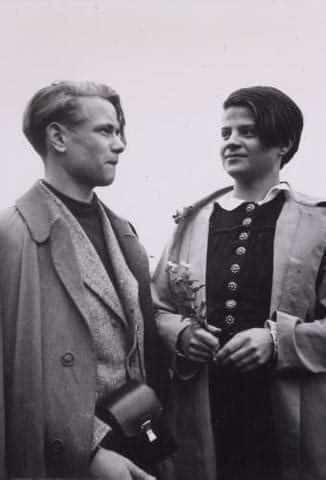
Sophie Scholl fully understood the danger by 1942. She joined her brother Hans and several other University of Munich students in the anti-government resistance group known as The White Rose. It was made up of a number of young idealistic academics who wanted the German people to open their eyes to the crimes being committed by their government. Key members of the White Rose besides Hans and Sophie were Christoph Probst, Alexander Schmorell, Willi Graf and Professor Kurt Huber. They were not interested in overthrowing the government through violence and bloodshed, as with other resistance groups at the time, but to destroy the Nazi regime by intellectual and moral means. They distributed leaflets and other anti-war propaganda to educated Germans with the aim of undermining the Nazi position.
The White Rose produced a series of leaflets which were openly critical of Hitler’s government and the genocide against Jews and political opponents. They called for a public uprising and an end to the murder and terror that was engulfing Germany and occupied Europe. One of their pamphlets read, “We will not be silent. We are your bad conscience. The White Rose will not leave you in peace!”
White Rose members would walk around Munich, Nuremberg, and other German cities, dropping the pamphlets on street corners, in university buildings, public restrooms, and train stations. They were often on the move, sometimes traveling hundreds of miles on foot to other cities to spread their ideas and beliefs. They openly defied the Gestapo with their actions and constantly risked being caught and executed.
Members of the White Rose started to become more brazen in their activities, writing slogans such as “Down with Hitler” and “Freedom” on public buildings. They were stealing public thought and the right to free speech from the Gestapo. Sophie had gone from being dragged into the movement by her older brother to becoming one of its most active members, going so far as to personally deliver many of the leaflets, using her status as a young female student to evade detection. While men of military age were treated with suspicion and closely monitored, women were not. Sophie was able to walk about Munich and beyond with relative ease, ferrying documents and messages between members.
The White Rose was one of the most famous and effective student movements in all of human history. Although the group only existed for a short time, their resistance and sacrifice continue to inspire all who dare to challenge injustice and ignorance. They knew full well that they would be caught and most likely beheaded by the Gestapo, yet they still carried on, believing that the truth was more powerful than their fear.



Arrest and Trial
On February 18, 1943, Sophie Scholl and her brother Hans carried out what would become their final act of resistance. They scattered hundreds of anti-Nazi leaflets throughout the University of Munich, stuffing them under the doors of lecture halls and leaving piles of them in courtyards. As Sophie emptied the last of the paper from her outstretched hands over a balcony, a university janitor, Jakob Schmid, spotted the flurry of paper and immediately notified the Gestapo.
Hours later, Sophie, Hans, and their best friend Christoph Probst were arrested. When the Gestapo searched Hans’s belongings, they discovered a draft of another anti-Nazi leaflet written by Probst, tying him to their actions. There was no doubt in the minds of the Gestapo that they had caught the right people before the arrested ever entered a courtroom.
Sophie was taken to Gestapo headquarters and was immediately interrogated by two officers. At first, she tried to lie and deny the accusations to protect other members of the White Rose. Still, when presented with irrefutable evidence, she proudly took full responsibility for her actions, hoping to protect her friends. Rather than apologizing for her deeds, Sophie calmly stood up to her interrogators.
When asked why she and her friends would want to destroy Germany, Sophie boldly replied, “What we said and wrote is what many people think; they just don’t dare to say it out loud.” She did not betray any other members of the White Rose to her Gestapo interrogators. Hours of questioning had not rattled Sophie, as the Gestapo had expected a meek and frightened young woman to appear before them instead of a political radical.
On February 22, 1943, just four days after their arrests, Sophie, Hans, and Christoph Probst were brought before the People’s Court to stand trial. The courtroom was packed, and the presiding judge was Roland Freisler, an extremely zealous Nazi known for his bombastic tirades and harsh sentences. Their trial was nothing more than a show trial —a form of political theater designed to demonstrate who was in charge. Freisler berated and mocked Sophie in an attempt to humiliate her into submission publicly. But Sophie stood up to him at every turn, answering his pointed questions with polite but firm defiance.
When Freisler charged the defendants with high treason, Sophie calmly responded, “Somebody, after all, had to make a start.” Sophie’s calm defiance in the face of Freisler’s brutality was a rare and inspiring act of resistance.
The trial took only a few hours to complete, and the result was never in doubt. The court found all three defendants guilty of treason, and Judge Freisler quickly brought the hammer down, sentencing the three to death by guillotine. The court allowed no appeal, and the brutality of the Nazi regime was on full display. Sophie remained stoic and calm as the trial progressed, even as the reality of her impending fate began to sink in. The Nazis tried to silence Sophie, but her actions during the trial made sure that her voice would never be silenced.

Execution and Final Words
Early on the morning of February 22, 1943, mere hours after the trial, Sophie Scholl, her brother Hans, and Christoph Probst were taken from their prison cells and led to the execution chamber at Stadelheim Prison in Munich. The speed of their sentencing was a chilling reminder of the Nazi regime’s ruthlessness. There was no delay, no appeal, and no second chance. By rushing the executions, the authorities hoped to prevent any public sympathy or last-minute reprieves. But they were wrong. In trying to silence the White Rose, they only guaranteed its immortality.
At just 21 years old, Sophie showed remarkable calm in the face of death. Witnesses recalled that she remained composed and dignified in her final moments, showing no outward signs of fear or regret. As she walked to the guillotine, it is said she passed a mirror and looked at her own face, smiling as she said, “Such a fine, sunny day, and I have to go. What does my death matter if through us, thousands are awakened?”
These words have become a poignant symbol of Sophie Scholl’s courage and her unwavering belief in justice. Her dignified defiance in the face of death was in stark contrast to many political prisoners who eventually gave in to Nazi pressure. Sophie remained true to herself until the very end.
Hans Scholl and Christoph Probst were executed shortly after Sophie, their lives snuffed out as quickly as their White Rose resistance. Hans, who faced the guillotine with his hands tied, reportedly shouted “Long live freedom!” as he was executed. To the very end, he refused to let the Nazi regime rob him of his dignity. Christoph Probst, a young father of three, was the last of the White Rose to die, and he, too, met his fate with quiet bravery. The haste with which the executions were carried out was meant to prevent any further acts of defiance, but instead, it created martyrs for the cause of freedom.
Reports suggest that the bravery of the young resisters deeply moved the prison guards and officials who witnessed the executions. Even the most hardened members of the Nazi system could not help but be affected by the strength and conviction of Sophie, Hans, and Christoph. The words and actions of the White Rose would continue to inspire long after their deaths. Though the physical movement was destroyed, its spirit lived on in the hearts of all who would not give up on freedom.

Sophie Scholl’s Legacy and Impact
Sophie Scholl’s legacy has endured through time as a symbol of bravery, truth, and resistance against tyranny. Her defiance of Nazi oppression and sacrifice for her beliefs continue to inspire people who value freedom and justice. Compared to many other wartime resisters, Sophie’s story and courage have become particularly resonant and meaningful, partly due to her young age. She had just turned 21 when she risked everything and chose to stand up to the Nazi regime.
It is easy to dismiss the acts of a single student as insignificant, but the arrest of Sophie Scholl and her subsequent trial rocked the entire country. Her last words, “What does my death matter if through us, thousands are awakened?” have become a rallying cry for those who dare to speak truth to power.
In the decades following her execution, Sophie Scholl and the White Rose movement were commemorated and celebrated in Germany and around the world. Books, films, and documentaries about Sophie’s life and resistance have been produced, ensuring that her legacy is remembered and honored. The 2005 film Sophie Scholl: The Final Days received international recognition for its powerful depiction of Sophie’s arrest and trial. Streets, squares, and schools in Germany have been named after Sophie Scholl, and her bust is now present in the Walhalla Memorial, the hall of fame for great Germans. Sophie Scholl and the White Rose group are now an inextricable part of history and are celebrated as an example of resistance, bravery, and moral integrity.
Sophie Scholl and the White Rose group have been the subject of numerous academic studies and historical analyses. Historians and scholars have been investigating and reassessing the group’s impact and legacy within the context of anti-Nazi resistance. While it is now evident that the group’s real impact during the war was minimal, its actions and leaflets made it clear that not all Germans were supportive of Hitler and Nazi rule. The White Rose’s leaflets were smuggled to the Western Allies and then reproduced and dropped over Germany in leaflets as a sign of hope.
Scholars and experts view Sophie’s resistance and the group’s actions as a demonstration that even in the most repressive conditions, dissenting voices can still be raised. Her written works and speeches are often used in schools and universities to teach young generations about integrity, truth, and resistance to authoritarianism.

Sophie Scholl’s story and legacy remain relevant today, long after World War II. Her life and sacrifice have become an example and a history lesson, teaching people how to resist authoritarianism, tyranny, and oppression. Her story is often mentioned in the media and public discussions about modern-day resistance movements, human rights, and civil disobedience. In the modern world, where the very notion of democracy and freedom is constantly under threat, Sophie Scholl’s example and courage are a powerful reminder that individual actions and voices can make a difference. Whether it is in peaceful protests, investigative journalism, or advocacy, Sophie Scholl continues to inspire people to speak truth to power and to stand against dictators and tyrants.
Sophie Scholl’s story and sacrifice serve as a potent reminder that evil must always be opposed, and silence in the face of it is tantamount to complicity. Even though her life was cut short, her bravery and her words continue to live on, inspiring and giving strength to those who stand up against oppression. Sophie Scholl was a single individual, and a single student among millions, but her voice could not be silenced. She serves as a reminder to all of us that we must all continue to do the same.

